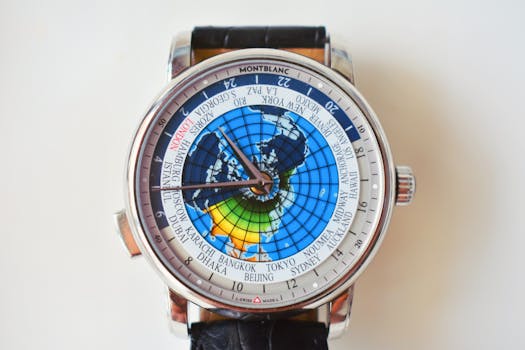Understanding Watch Complications and Their Functions – WordPress
Watch complications are intricate mechanisms that add functionality to a timepiece, going beyond basic timekeeping. In this article, we will delve into the world of watch complications, exploring their types, functions, and significance in the world of horology.
Introduction to Watch Complications
Watch complications have been a cornerstone of horology for centuries, with the first complication, the striking clock, dating back to the 14th century. Since then, watchmakers have continued to innovate and push the boundaries of what is possible with mechanical timepieces. Today, watch complications range from simple date displays to complex mechanisms like tourbillons and perpetual calendars.
Types of Watch Complications
There are numerous types of watch complications, each with its unique function and complexity. Some common complications include:
- Date display: A simple complication that displays the current date.
- Day-night indicator: A complication that indicates whether it is day or night, often using a rotating disk or hand.
- Power reserve indicator: A complication that displays the remaining power reserve of the watch.
- Chronograph: A complication that measures elapsed time, often using a separate hand or register.
- Tourbillon: A complex complication that counters the effects of gravity on timekeeping, using a rotating cage to house the escapement.
- Perpetual calendar: A complication that displays the date, day, month, and year, taking into account leap years and month lengths.
Advanced Watch Complications
Some watch complications are truly exceptional, pushing the boundaries of innovation and complexity. These include:
- Minute repeater: A complication that chimes the time on demand, using a series of gongs and hammers.
- Astronomical complications: Complications that display astronomical information, such as the position of the stars, planets, or moons.
- Split-seconds chronograph: A complication that measures elapsed time, allowing for the measurement of two separate events simultaneously.
Conclusion and Takeaways
In conclusion, watch complications are a fascinating aspect of horology, offering a glimpse into the intricate world of mechanical timepieces. By understanding the various types of complications and their functions, collectors and enthusiasts can appreciate the craftsmanship and innovation that goes into creating these intricate mechanisms. The key takeaways from this article are:
- Watch complications add functionality to a timepiece, going beyond basic timekeeping.
- There are numerous types of complications, ranging from simple date displays to complex mechanisms like tourbillons and perpetual calendars.
- Advanced complications, such as minute repeaters and astronomical complications, showcase the innovation and craftsmanship of watchmakers.






